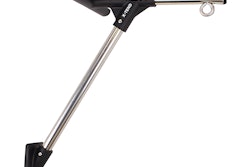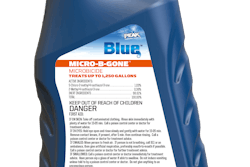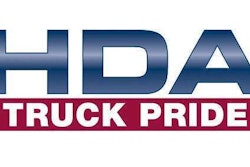By Bill Wade, Wade & Partners
Heavy-duty distributors and truck dealers have been increasingly investing in software for e-commerce with fleets, municipalities, suppliers and groups, spending six to seven figures annually on technology. However, a recent Benfield Consulting review throws doubt on the ability of most distributors to positively move sales online.
The failure to move more transactions online diminishes the return on the software investment. It also takes distributors out of the high growth online sector where compounded annual growth is roughly three times that of sales-assisted, full-service distribution.
By 2020, nearly 20 percent of currently stocked items sold will be transacted online in B-to-B markets. If fleet specialists don’t get online right, and soon, they will become known as a contracting channel; much like brick-and-mortar retail is seen today.
Two end-user studies find that distributor customers are increasingly buying direct from manufacturers and non-traditional suppliers (Amazon). The distributor research studies find that once firms reach average to above-average sales online (between 10 percent to 15 percent of total volume), they begin to lose online sales.
What’s the problem?
Based on over 40 years in this business, I feel that the primary culprits are the branch cost structure and the culture of traditional distributors and dealers.
The problem is coming from the effects of consolidating customers and new (primarily electronic-intensive) technology, where distributors cover multiple vocations with differing product and service needs. The cost issue is a function of:
- Excessive brick and mortar locations left over from a time when price and availability information was not real-time and often inaccurate;
- Sales forces compensated on product sales when the customer prefers to self-serve and order 24/7;
- Growing cost-to-serve that saps margin dollars due to ‘grass-is-greener’ expansion across multiple markets, new geography and tangential product lines that add a rising (mostly subtle) cost of complexity;
- Profit goal ‘incongruence’ as branch managers and outside sales are compensated on margin dollars… but extend deals adding operating expenses in special services to drive sales;
- Decreasing support by manufacturers in rebates and special pricing arrangements as they increasingly bypass distributors for more efficient and effective online channels (soon to include selling fleets direct?);
- Lack of line-item buying statistics for each customer to identify and cure hidden, unnecessary, buying-activity costs and product cross subsidies.
Traditional, branch based ‘box-pushing’ distribution is a high-cost channel with growing inefficiencies due to structure, coverage of multiple markets by multiple suppliers and decreasing financial and training support from channel partners.
End user B-to-B research finds that fleets purchase non-branded from non-wholesale entities for several reasons. The primary driver is a more competitive price followed by a better online experience.
Our industry’s exploding trend to bundlers (suppliers adding imported lines, usually somewhat adjacent in application) in an attempt to expand a ‘one-stop-shop’ logistic plan further muddies supplier profiles.
Benfield’s 2016 research found that some 70 percent+ of distributors did not have adequate software to offer a competitive buying experience, the effect of the conditioning of purchasers by their Amazon experiences.
Scary research note: Quality content, ranked by 90 percent of end users as the most important online variable, is supported with any kind of product information management system by less than 20 percent of distributors.
Lastly, while timeliness is important, digital transformation initiatives need to start small. Too often we try to take on the task of changing a whole business all at once. Trying to boil the ocean, within such a complex supply chain, is a prescription for failure.
It Always Boils Down to The Workforce
I believe strongly that technologies such as AI, robotics and 3D printing will “revolutionize” not just work roles but how people live and play day-to-day.
Three personnel trends will “blindside” many businesses by 2020:
- Jobs will be automated faster than anticipated;
- Automation will not be limited to low-skilled jobs;
- The impact of automation will disrupt work, careers, and jobs more than expected.
The cultural impediment to online progress is more difficult to define but is the primary cause of falling online performance. My guesses about this cultural conflict include:
- Rationalization that outside-the-industry competitors are not taking share with a better price and better online buying experience;
- Adherence to a full-service sales effort and branch complement despite their growing redundancy;
- Sellers who are reticent to move accounts online for fear of losing their jobs;
- Managers who don’t adequately support online efforts with changes in processes and new KPIs;
- Executives who fail to grasp that e-commerce is more than a means to launder a transaction and is a substantial change in the way business is done.
What can you do now? Conduct customer-based research on what they buy online, how much, and favorite online suppliers. Carefully evaluate your online software bundle to see if it offers a competitive buying experience. Neither independent fleet specialists nor parts-savvy dealers can afford to wait for the perfect software solution.
You should move ahead on many fronts in addition to technology and begin to migrate existing accounts online, rework the sales force for better efficiency and lower long-term costs, and restructure the logistics to get brick and mortar cost down.
P.S.: About Future Rep Value in Distribution
Bruce Merrifield usually has a great technique to cut to the real questions in this historic transformation. One concern that he has emphasized revolves around the function of personal sales forces … distributor and factory alike. As you study your future options, be sure not to avoid these key questions:
- Why do most Millennials want to circumvent outside and inside Reps? Is it really economic logic… or have expectations been raised by personal Internet interactions?
- How fast can your reps reinvent their value proposition to support personal-call costs?
- What is the real Amazon threat to your branches (especially for components that ship via UPS). Trust me, your countermen are still the most valuable players in the supply chain… but they no longer represent the only source of diagnostic or installation data.
- What valued ‘extra services’ can you invent for customers that Amazon can’t supply?
- Let me clarify: How fast can you add a significant service component to your offering?
- Could you sell total-replenishment-system solutions that beat Amazon’s value proposition? If sold, can you support the super service and savings you’ve promised?
Additionally, is your current data approachable to unmask killer cross-subsidies by customer and SKU? Even with necessary analytics, have you delineated your salesforce 2020 vision and migration path? Finally (and perhaps the toughest), which current reps will make it?
I am always struck by the fear that ultimately drives large and mature businesses. Contrast it with the fearlessness that is needed to create a new one. Wouldn’t you love to be able to pinpoint that singular moment in your business’ lifecycle when the culture changed from innovation to risk mitigation?
Want help with this analysis? Get a copy of a new book by Dr. Jean Hurlbert and WayPoint’s Randy MacLean (order it on Amazon, natch) YOU CAN’T SERVE THEM WELL IF YOU DON’T KNOW THEM WELL. It provides a valuable outline to address many of these questions.
Remember, Amazon, like sharks, doesn’t specifically target you, and it certainly doesn’t hold grudges.
Bill Wade is a partner at Wade & Partners and a heavy-duty aftermarket veteran. He is the author of Aftermarket Innovations. He can be reached at [email protected].











